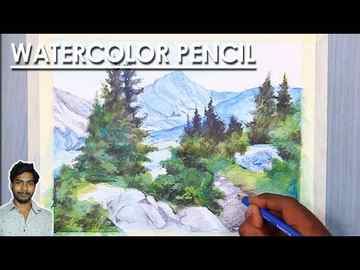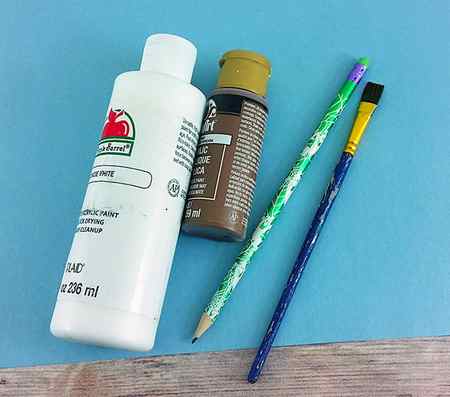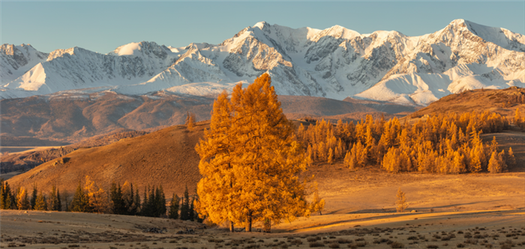How to Draw Toco Toucan Bird in Watercolor Pencil

Why Use Watercolor Pencils? Watercolor pencils are a unique medium for creating art. They combine drawing with painting in a manner that no other medium can replicate. Watercolor pencils are a medium that give the artist the best of both worlds of painting and drawing. They are similar to colored pencils but behave differently when water is added. This is because colored pencil pigment is held by a waxy or oil-based binder, while watercolor pencils have a water-soluble binder. Because the medium is encased inside of a pencil that can be sharpened, the artist can create detailed and delicate marks that may be difficult to achieve with a brush. How to Use Watercolor Pencils The manner in which watercolor pencils are used is ultimately up to the artist. But, as with any medium, there are some things that may be helpful to keep in mind. Here are a few suggestions for drawing with watercolor pencils. Activate Watercolor Pencil Applications with Water Watercolor pencils are designed to be used with water, which can be applied with a soft brush after making marks with the pencil. This process is called activation. Once the material has been “activated”, it behaves like watercolor. Typically, water is applied with a brush, but sponges and other tools can be used as well. Nylon brushes work well for this, but natural hair brushes work too. Bristle brushes are typically used for heavier bodied media like oils or acrylics, so it may be best not to use them with watercolor. Watercolor pencil techniques Layer and “Mix” Colors” Watercolor pencils can be mixed, mostly through layering. To mix colors, apply one color and then layer an application of a second color over the top or right next to the first color. Then, activate the area with water. The colors will mix together. To produce additional depth in the color and additional mixing, allow the first layer to dry completely. Then you can repeat the process with another round of mixed colors over the top of the dried area. I would suggest layering only a few colors at a time to prevent muddied colors. I would not suggest mixing more than 4 colors at once. You can also have a test sheet of paper on hand to test your mixtures prior to applying them to your finished work. Experiment As is the case with any art medium that you use, experimentation is important. Try applying the pencil directly to an area that is saturated with water to create interesting effects and bold applications of color. Take Color Directly from the Pencil Tip You aren’t limited to applying the pencil to the surface. You can also take the pigment directly from the tip of the pencil with a brush loaded with water. You can then apply the color directly to the surface with a brush, just like with traditional watercolors. This technique often results in a lighter and less intense application of color. The Watercolor Workshop “The Watercolor Workshop” video course is a comprehensive learning experience designed to provide the student with the most comprehensive approach to watercolor painting. VIEW COURSE Surfaces for Watercolor Pencils Watercolor pencils should be applied to watercolor paper or a heavy board such as illustration board. As water is applied, thinner papers will buckle or even tear. Cold press watercolor papers typically have a heavier texture or “tooth”. While some artists will prefer the texture, others may find that smoother surfaces are better suited for their needs. Below is an image of a watercolor pencil drawing on cold press paper from The Watercolor Workshop. Watercolor pencil drawing on cold press paper A solution for these artists would be illustration board or hot press watercolor paper (used in the demonstration video above and the step by step below). Illustration board will provide the rigid support that is required while providing a smoother surface for more precise detailing. Watercolor Pencils – Step by Step For this demonstration, we’ll work from a photo reference. We’ll make a special effort to alter the colors to create a work of art that isn’t a direct copy of the photo. The reference we’ll use is from pixabay.com. I’ve altered the original image a bit to make the composition a little stronger. Finishing the stems and leaves with watercolor pencils Derwent watercolor pencils are used for this lesson, working from a basic set of 24. We’ll work on 140 lb. hot press watercolor paper, which is quite a bit smoother than cold press paper. We’ll begin by creating a light pencil sketch on hot press watercolor paper with a graphite pencil. Only the contour lines or outlines are drawn with no shading. We’ll address the background first and then work our way to the sunflowers. Since the sunflower petals are yellow, we’ll create a contrasting background made up of mostly purples. Purple is the complement of yellow so this color should provide high contrast. To add a bit of variety and interest, we’ll include some blues and reds as well.
How to draw a Toucan | Birds

You can support the author of this website and also suggest your own ideas for new drawings by making a small donation here:
Leave a Comment Cancel reply
How to draw the face of Kakashi Hatake (Naruto)
How to draw Spider-Man hanging on web
How to draw Sonic the Hedgehog
How to draw Iron Man in full growth
How to draw the Avengers Team
How to draw Monkey D. Luffy face | One Piece
How to draw Spider-Man mask
How to draw Mickey Mouse
How to draw Joker – Joaquin Phoenix
How to draw Princess Elsa’s portrait | Frozen
2023 © Sketchok.com
We use cookies on our website to give you the most relevant experience by remembering your preferences and repeat visits. By clicking “Accept”, you consent to the use of ALL the cookies.
Manage consent
Privacy Overview
This website uses cookies to improve your experience while you navigate through the website. Out of these, the cookies that are categorized as necessary are stored on your browser as they are essential for the working of basic functionalities of the website. We also use third-party cookies that help us analyze and understand how you use this website. These cookies will be stored in your browser only with your consent. You also have the option to opt-out of these cookies. But opting out of some of these cookies may affect your browsing experience.
Necessary
Always Enabled
Necessary cookies are absolutely essential for the website to function properly. These cookies ensure basic functionalities and security features of the website, anonymously.
| Cookie | Duration | Description |
|---|---|---|
| cookielawinfo-checbox-analytics | 11 months | This cookie is set by GDPR Cookie Consent plugin. The cookie is used to store the user consent for the cookies in the category “Analytics”. |
| cookielawinfo-checbox-functional | 11 months | The cookie is set by GDPR cookie consent to record the user consent for the cookies in the category “Functional”. |
| cookielawinfo-checbox-others | 11 months | This cookie is set by GDPR Cookie Consent plugin. The cookie is used to store the user consent for the cookies in the category “Other. |
| cookielawinfo-checkbox-necessary | 11 months | This cookie is set by GDPR Cookie Consent plugin. The cookies is used to store the user consent for the cookies in the category “Necessary”. |
| cookielawinfo-checkbox-performance | 11 months | This cookie is set by GDPR Cookie Consent plugin. The cookie is used to store the user consent for the cookies in the category “Performance”. |
| viewed_cookie_policy | 11 months | The cookie is set by the GDPR Cookie Consent plugin and is used to store whether or not user has consented to the use of cookies. It does not store any personal data. |


